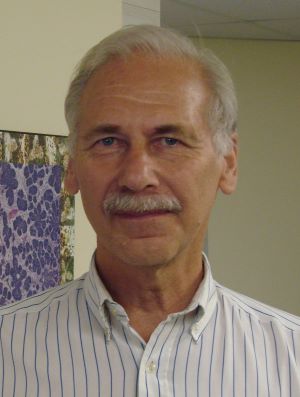Table of Contents
Definition / general | Essential features | Terminology | ICD coding | Epidemiology | Sites | Pathophysiology | Etiology | Diagnosis | Prognostic factors | Case reports | Treatment | Microscopic (histologic) description | Microscopic (histologic) images | Positive stains | Electron microscopy description | Sample pathology report | Differential diagnosis | Board review style question #1 | Board review style answer #1 | Board review style question #2 | Board review style answer #2Cite this page: van der Kwast T. Sclerosing adenosis. PathologyOutlines.com website. https://www.pathologyoutlines.com/topic/prostatesclerosingadenosis.html. Accessed April 1st, 2025.
Definition / general
- Sclerosing adenosis is a circumscribed benign lesion located in the transition zone of the prostate with distinct histopathological and immunostaining features
Essential features
- Uncommon incidental benign finding in the transition zone of the prostate
- Well demarcated unencapsulated proliferation of glandular tissue
- Mixture of variably sized glands and hypercellular spindle cellular stroma with myxoid component
Terminology
- (Pseudo)adenomatoid tumor (not recommended)
- Fibroepithelial nodule (not recommended)
ICD coding
- ICD-10: N40.2 - nodular prostate without lower urinary tract symptoms
Epidemiology
- Incidental finding in transurethral resections for urinary outflow obstruction or in (cysto)prostatectomy specimens of patients with bladder or prostate cancer
- Rarely in prostate biopsies of the transition zone (Arch Pathol Lab Med 2003;127:e14)
- Identified in 2% of a series of 100 whole embedded prostate tissues (Am J Surg Pathol 1992;16:383, Am J Surg Pathol 1991;15:660)
- Multifocal in ~30% of cases (Am J Surg Pathol 1992;16:383)
Sites
- Transition zone of the prostate
Pathophysiology
- Myoepithelial metaplasia of basal cells as witnessed by coexpression of smooth muscle actin and high molecular weight cytokeratin (Am J Surg Pathol 1992;16:383)
Etiology
- Unknown
Diagnosis
- Histologic examination of biopsy or resection specimens
Prognostic factors
- Benign lesion
- No known association with prostate malignancy
Case reports
- 65, 72 and 78 year old men with sclerosing adenosis of the prostate with symptoms of urinary tract obstruction (Histopathology 1992;20:505)
- 66 year old man biopsied for elevated prostate specific antigen (PSA) and 70 year old man with urinary outflow obstruction (Arch Pathol Lab Med 2003;127:e14)
- 83 year old Japanese man with transurethral resection of the prostate showing sclerosing adenosis in combination with basal cell hyperplasia (Med Mol Morphol 2010;43:226)
Treatment
- No treatment required
Microscopic (histologic) description
- Nonencapsulated nodular circumscribed lesion with smooth contours; size range: 1.5 - 11.1 mm (Am J Surg Pathol 1992;16:383)
- Lobular small acinar proliferation with clear (pale) to eosinophilic cytoplasm; ranging from well formed acini to poorly formed glands and single cells
- No nuclear pleomorphism
- Areas of prominent spindle cellular and myxoid stroma
- Some acini and epithelial cell nests / clusters surrounded by thickened hyalinized stroma, resembling basement membrane
- Basal cells surrounding the acini may be focally prominent and hyperplastic
- In rare cases, glandular cells may display prominent nucleoli and sporadic mitosis (Histopathology 2010;56:627)
Microscopic (histologic) images
Positive stains
- Smooth muscle actin in basal cells (Am J Surg Pathol 1992;16:383)
- Calponin in basal cells (World J Clin Cases 2022;10:6009)
- High molecular weight cytokeratin in basal cells (Histopathology 2010;56:627)
- S100, p63 in basal cells
- PSA in acinar luminal cells (Histopathology 2010;56:627)
- Androgen receptor in acinar luminal cells
- AMACR (P504S) in acinar luminal cells (weak to moderate staining in 60% of cases) (World J Clin Cases 2022;10:6009)
Electron microscopy description
- Large aggregates of cytoplasmic microfilaments with multiple dense bodies in the basal cells surrounding the acinar luminal cell (Am J Surg Pathol 1992;16:383, Histopathology 1992;20:505)
Sample pathology report
- Prostate, transurethral resection, weight 25 grams:
- Nodular hyperplasia
- Incidental finding: sclerosing adenosis
Differential diagnosis
- Acinar adenocarcinoma:
- No double layer of basal cells
- Prominent (inclusion-like) nucleoli are commonly present
- Absence of the cellular / myxoid stroma that is characteristic of sclerosing adenosis
- Negative for basal cell or myoepithelial markers such as high molecular weight cytokeratin, S100 or smooth muscle actin
- Adenosis (atypical adenomatous hyperplasia):
- Scattered, not continuous basal cell lining
- Absence of the spindle cellular / myxoid stroma that is characteristic of sclerosing adenosis
- Negative for myoepithelial markers such as S100 or smooth muscle actin
Board review style question #1
Board review style answer #1
D. Spindle cellular stroma with myxoid areas. Presence of bland evenly distributed spindle cells and myxoid areas are the distinguishing features most suggestive of sclerosing adenosis. Answer A is incorrect because very conspicuous nucleoli may be seen in atypical sclerosing adenosis. Answer B is incorrect because multifocality can occur both in adenocarcinoma and sclerosing adenosis. Answer C is incorrect because in both sclerosing adenosis and adenocarcinoma, the glandular size may vary considerably.
Comment Here
Reference: Sclerosing adenosis
Comment Here
Reference: Sclerosing adenosis
Board review style question #2
Which pair of immunomarkers are specific for sclerosing adenosis of the prostate?
- AMACR and p63
- Androgen receptor and MIB1
- S100 and calponin
- Smooth muscle actin and high molecular weight keratin
Board review style answer #2
C. S100 and calponin. Myoepithelial metaplasia is characteristic for sclerosing adenosis. Calponin and S100 are myoepithelial markers.
Answer A is incorrect because AMACR is expressed by other prostate lesions as well, such as adenocarcinoma, atrophy and high grade prostatic intraepithelial neoplasia (PIN). p63 is a ubiquitous basal cell marker and is expressed by several benign lesions of the prostate such as benign prostatic hyperplasia (BPH) and adenosis. Answer B is incorrect because androgen receptor is expressed by luminal cells of the prostate, including BPH and adenosis. Answer D is incorrect because although smooth muscle actin expression is specific for sclerosing adenosis, high molecular weight keratin is a ubiquitous basal cell marker, expressed in atrophy, BPH and adenosis.
Comment Here
Reference: Sclerosing adenosis
Comment Here
Reference: Sclerosing adenosis
















